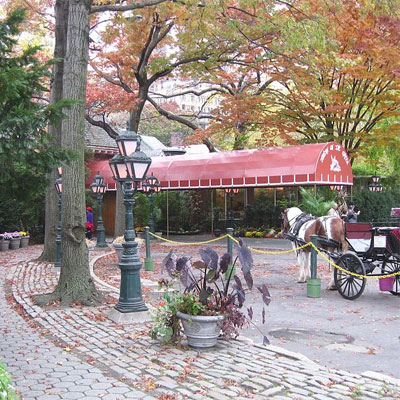NY Times Magazine Chronicles Philly Guys’ Quest to Revitalize New York’s Tavern on the Green

Photo courtesy of Wikipedia.
The culinary world flipped its lid last year when two Philly boys, Jim Caiola and David Salama of Beau Monde at Sixth and Bainbridge, won a contract to redesign New York’s beloved foodie landmark, Tavern on the Green, which closed amid bankruptcy issues more than six years ago.
Today, though, the culinary world is rejoicing thanks to lengthy, extremely detailed look at the pair’s plans in NY Times Magazine. Set to reopen in late December, the culinary institution expects its renovations will bring in around $17 million, and expects to see 600 sit-down meals each weekday, along with 1,200 on the weekends.
But all that won’t come until the painstaking process of re-tooling an 80-year-old culinary institution is completed. And, as the Times‘ Max Chafkin illustrates, that process goes right down to extended discussions about the different virtues of various fork styles:
Over the course of three hours, they looked at probably 300 forks and actually tested some 50 possibilities. Testing meant first looking at a fork, feeling its weight in the palm of a hand and then, if it seemed especially promising, pantomiming a bite. I watched them reject one fork because they didn’t like the scalloped design on its end and two others for being “too squared off” and “too Deco,” respectively. Another was dismissed because, as Sparks put it, “that reads bistro” rather than tavern.
All the forks — for which their tableware supplier estimates they will pay around $2 each — had a shaft and four tines, and most were made of the same high grade of stainless steel, containing 18 percent chrome and 10 percent nickel. (Actual silver silverware — or even the plated stuff — was ruled out as too expensive. Cheaper, lower-grade steel was deemed not durable enough.) And yet, even in what would have seemed a fairly narrow universe of possibilities, it felt as if there were an endless array of choices.
And with that, New York just became a little more Philly. Read Chafkin’s entire report here. [New York Times]


